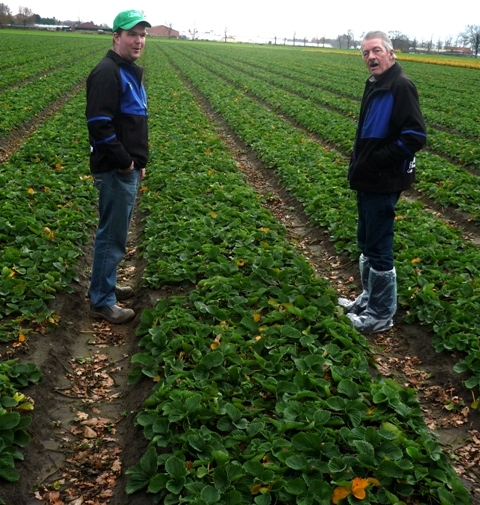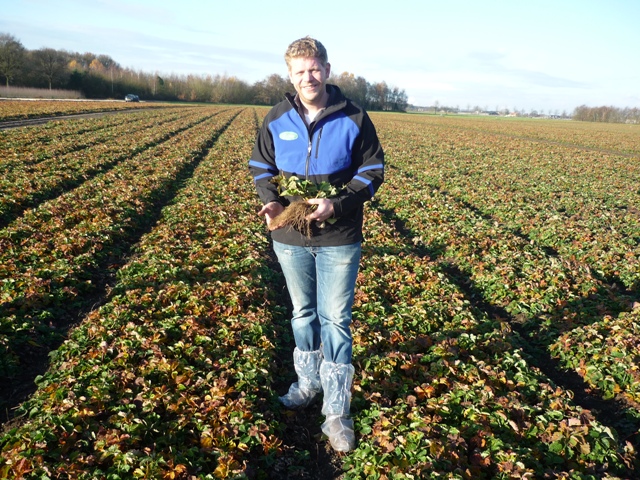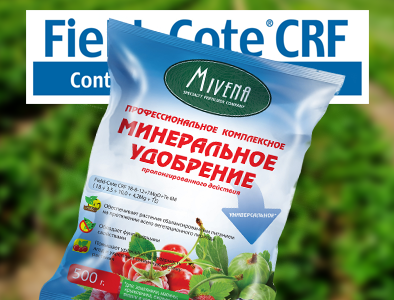Pests and diseases
Pests and diseases
Diseases of strawberry (strawberries)
Fusarium wilt
A very harmful disease strawberry (strawberry). Striking rajamouli Bush and the entire root system. When infected the Bush gradually changes color, fades and shrinks. The ovary on the affected shrub is not developed. A sick plant ceases to grow and dies. The most affected plants and leaves and moustache are painted in a brownish color. The most favorable conditions for the fungus development occurs in summer, especially in hot weather. Sources of infection can be weeds, and some vegetable crops, and the soil in which the fungus remains viable for several years in plant debris.
If signs of wilting plants - the immediate laboratory analysis, and in the case of confirmation of infection of plants by Verticillium - spraying plantations strawberry (strawberry) drugs fundazol, benarat, or the use of these drugs with irrigation water in drip tube. In the early stages of the disease, as well as to prevent effective use of Trichoderma.
Black rot
Affects berry strawberry (strawberry). Affected berries turn brown, become watery, lose their smell, taste and covered in the beginning colourless, later darkening patina, which is a fungal mycelium, which are formed in sporangia. The pathogen develops on any rotting material, forming in the affected tissues of plants dark-coloured globular shape zygospore. The development of the disease contribute to the high temperature and relative humidity above 85%.
Chemical methods of struggle - autumn spraying of the plantation garden strawberries (strawberries) drug Jordan, in the spring, when active growth of the leaves - spraying drugs euparen, switch.
Fitoftoroza (leathery) rot
One of the most harmful diseases of strawberry. Fitoftoroza (leathery) decay leads to a reduction in the harvest of berries by 15-20%, and in some regions in some years to almost complete loss of the crop. Fitoftoroza (leathery) rot attacks all aboveground organs of the plant: berries, buds, flowers, buds, the tops of the stems, the growing points.
The greatest harm the fungus attacks berries. Mature berries are formed brown with purple hue, firm, leathery spots. The affected flesh is strawberry (strawberry) is elastic and is not separated from the rest of the berries. Diseased berries - bitter. Green fruits are covered by light brown spots with dark center and light border, acquire the hardness and bitter taste. All affected tissue is penetrated by the mycelium of the fungus, there are formed the summer (zoosporangia) and winter dormant (oospores) disputes. The berries progressively shrivel, are mummified.
Spots on infected buds, flowers and inflorescences have an irregular shape and brown in color. There is necrosis of the growing point through which the fungus penetrates into the upper part of the stem. The stem turns brown, the dying base of petioles and socket Bush. The fungus can penetrate roots, but rarely. In all affected organs, especially the berries in wet weather formed a thick white coating of the fungus.
Development fitoftoroza rot is facilitated by the presence of condensed moisture. So flash fitoftoroza (leathery) rot on strawberry (strawberries) were observed after rainfall and abundant ROS. The disease appears in late may on the rosettes and inflorescences, in June it is found on buds and flowers. Maximum development fitoftoroza the rot reaches to the end of June - July, when lesions occur on the berries.
The fungus overwinters in the form of resting oospores in infected plant ostatkami in the soil, and also in the live sockets of the bushes.
The blight of the roots (redness of the axial cylinder of the root)
The blight of the roots (redness of the axial cylinder of the root) is the root system of strawberry (strawberries). Manifested in warm, dry days in may-June months in the form of sudden wilting of the whole plant or lower leaves. The disease is accompanied by redness of the axial cylinder of the root, which is most noticeable in the early stages of the disease. Later, lateral roots and fine roots die off, leaving only the larger, blackened in the lower parts, similar to the "rat tail".
Leaves affected by late blight the roots of plants of strawberry (strawberries) are bluish-reddish, starting with the older, fade. Young leaves of diseased plants are shrinking. The pathogen persists in the soil in the form of zoospores. Penetrating the root hairs, the zoospores give rise to mycelium,which grow and fills the conductive tissue of the root. Mycelium colorless,with walls, intercellular. Develops in the wood of the root.
Zoosporangia are formed on the surface of affected roots at high soil moisture and in water after rains and irrigation. Throughout the summer they are formed in a core cylinder of the root, after the destruction which spores germinate to a sprout, giving primary zoosporangia.
The main source of infection is the infected planting material and soil.
Gray mold
Gray mold is widespread. In some years, with moist warm weather, in the harvest period of the disease can affect 30-60% of the berries. Particularly rapidly and massively growing on compacted, poorly ventilated areas with a long growing strawberry (strawberries) in one place. Foci of infection are the old leaves, weeds, damaged berries.
Affects the berries, leaves, buds, flowers, peduncle, ovaries, and fully blossoms. Most typically affects berries. They formed softened, brown, rapidly expanding spots with fluffy grayish masses of spores of the pathogen on the surface. Damaged berries gradually dry up and are mummified. On the leaves there are large diffuse, dark gray or brown spots. In wet weather on them appears white coating conidia. Peduncle and ovary okolcovannaya weeping brown spots and later dry up.
For laying plantations need to use improved seedlings.
Preventive spraying strawberry (strawberries) during the spring regrowth of leaves drugs switch, euparen, topsin M or derosal. In the rainy year in the open ground - re-spraying one of these drugs immediately after flowering. Spores of the fungus are easily spread by wind and raindrops. During the summer produces up to 12 generations of dispute. It is therefore unacceptable to leave the area affected by Botrytis, the berries and other parts of plants.
Fully resistant varieties of strawberries against Botrytis no. Therefore, the most profitable strawberry production in annual crops with the laying of the plantation in the summer and stubbing it after the harvest.
Root rot
Root rot caused by different pathogens. First, blacken sharply demarcated areas of young white roots, and then there are frames growing black spots. The roots become brittle, they found a dry pull. Such plants lose a part of a viable root system, are inhibited, fruit bad, form a weak lateral shoots or almost there. Gradually turns brown the lower part of the rhizome,the part of the outlet of the stalks and leaves. Forms a dry, brown rot, plants lagravenese from the soil and die.
The disease is spread on individual plots with the permanent culture of the strawberry, as well as when it is cultivated after many years of cultivation of potatoes or vegetable plants. Ill plants of different ages, but more young. The rot is evident throughout the growing season.
Preventive spraying in the autumn with the drug Jordan. In the spring of effective application of Trichoderma through the drip irrigation system.
Powdery mildew
Powdery mildew affects the leaves, petioles, mustache, berry strawberry (strawberry). Originally developing on the underside of the leaf blade. On infected leaves from two sides develops a delicate, barely visible white patches. In the years of outbreaks formed the abundant mealy coating, particularly in the center of the socket Bush and his mustache. Sick leaves stop growth, become leathery, rough, the edges of the lobes are twisted inside. Later on the affected areas of the leaves appear brown necrosis or brown "tan" on the lower side. Affected mustache curl are curled, chlorotic leaves.
On the buds, flowers and ovaries powdery mildew is less noticeable. However, in the period of flowering strawberry (strawberry), and its development does not occur in the normal pollination and fertilization. The berries are immature and ugly, covered in waxy coating to become dry, acquire a mushroom smell and taste.
For the development of powdery mildew needs moist warm air. Such conditions are created in the first place, in greenhouses, where it can do the most harm. In areas with humid summers powdery mildew develops in the open ground throughout the season and is very draining plants.
Propagated the fungus spores that spread by air tokumei of planting material. For laying plantations need to use improved seedlings. The disease rarely manifests itself when growing on high ridges, and vertical podvesnoy culture.
Brown leaf spot
Brown leaf spot is a common disease that causes in the second half of vegetation mass lesion with subsequent necrosis of the leaves, causing the plants to weaken and it shows a decrease in winter hardiness and yield next year.
Brown leaf spot affects the leaves, petioles, whip mustache, sepals, peduncle and berries of garden strawberry (strawberry). Spots are formed on leaves in June-July. They first rounded, purple, and then in the Central part become gray-brown. On the edge spots long purple edging. Later the spots increase rapidly propagate along the veins, between veins or edges of leaves toward the center and become angular. Along the veins and on the surface of the spots in damp weather in late summer formed pycnidia of the fungus, forming a lot of konid protruding from pycnidia bright, slimy tendrils. On the whip mustache and leaf petioles the spots are brown, razmyagchayuschiesya, later necrotic, there are banners. The sepals arise necrosis.
The fungus overwinters on infected leaves of garden strawberries (strawberries), causing new infections in the spring.
Brown spotting
Brown spotting is a common disease of strawberry (strawberries), leading to the death of up to 30-50% of the active leaf surface of the leaves which weakens the plants. Maximum development of the disease reaches the second half of the summer, during the laying of floral kidneys, that is the formation of next year's crop. Affects the leaves, petioles, mustache, rarely sepals. Spots on the leaves purple, small ones at first, later increasing, angular or irregular. With the withering away of leaf tissue have a brown color. On the surface the disorder are black, shiny convex point - the Lodge conidia of the fungus.
Moustache and leaf petioles the spots are small, slightly depressed, rarely with visible sporulation. Spores are spread with rain drops and insects. The most favorable conditions for the fungus development are created when high humidity, moderate temperature and the presence of condensed moisture. The greatest development of the disease reaches in spring and at the end of season strawberry (strawberry). The fungus overwinters on infected leaves in the spring produces spores and causes new infection of healthy young leaves.
Verticillatae wilting
The disease is capable of, if it arose in the first year to the second year, the third year to cause wilting and death of 30-50% of the plants. The fungus affects the vascular system, root collar, the socket of a shrub and roots of strawberry (strawberries). Cases of the Bush first, "settle", then starts a radical shattering of the leaves. In the center of the Bush there are small chlorotic leaves, the plant turns reddish-yellow. To cut patient rhizomes noticeable brown ring of blood vessels. Have severely affected the bushes are painted, moreover, the vessels in the petioles and in his mustache.
Begins to manifest the disease during the period of growth of the ovary.
The causative agent of withering verticillate able to live on many weed and vegetable crops. They can be a source of infection. The main source of infection is soil, where the fungus remains viable for several years.
White rot
White rot affects the leaves and berries. Affected leaves fade first, then dry, and in wet weather rot; diseased berries rot. The surface of diseased leaves and berries covered with a white coating consisting of mycelium and formed her sclerotium.
The mycelium is resistant to drying. In the summer, it performs the function of reproduction of the fungus. Her pieces are carried by air and getting into raw space, provide vegetative mycelium. The fungus overwinters in the soil on plant debris in the form of sclerotia, which in the spring is a white coating of mycelium.
The best conditions for the development of white rot are created in wet and cool weather, especially in the thickened and clogged the spaces.
For disease prevention it is necessary to use for laying plantations only healthy seedlings. The disease usually affects plants in the open ground, but rarely manifests itself in growing strawberry (strawberry) in greenhouses, the black tape, or suspended and vertical culture.
White spot
One of the most common diseases of strawberry, the harmfulness of which is enhanced by the fact that it is the most intense of razvivaetsa period of flowering and ripening of berries, taking on average 12-15 per cent of the harvest, and in the years of epiphytotic - all commercial products.
The disease affects leaves, petioles,stems, peduncles, sepals of strawberry (strawberries). The leaves appear very small purple or reddish-brown circular spots that grow in diameter from 1 to 8 millimeters, in the center are white with dark-brown or purple rim. After some time the whitened center of the spot falls that is inherent only to this disease of strawberry leaves. Usually the spots do not merge, but on a very highly sensitive varieties, the merger may.
On the peduncles, petioles and mustache strawberry (strawberries) stain dark brown color, subsequently whitening in the centre, stretched along and depressed. Severely affected stems darken (turn brown), flat out, tend to land. The development of the disease contribute to rain, dew, watering, close planting, the introduction of excess organic fertilizer, cultivation is heavily affected in the area of varieties.
Anthracnose of strawberry
This is a dangerous and very common disease that affects the entire plant. On leaves circular spots obrazuyutsya, small, up to 3 mm in diameter, gray in the middle, surrounded by a purple border. The stems are formed gray spots and small deep ulcers surrounded by a wide purple border. When mass destruction the spots coalesce and the stems are covered with brownish solid, in the fall seriousa, friable tissue, which leads to the withering away of the ends of the shoots. Brush fruit garden strawberries (strawberries) affected with Anthracnose, die back, together with the unripe berries and damaged berries dry up.
The causative organism overwinters primarily on infected shoots. Especially Anthracnose develops in years with wet spring and summer.
For the prevention of Anthracnose is necessary to use for laying plantations only healthy seedlings of garden strawberry (strawberry). The disease rarely manifests itself when growing on high ridges, and vertical suspension culture.





